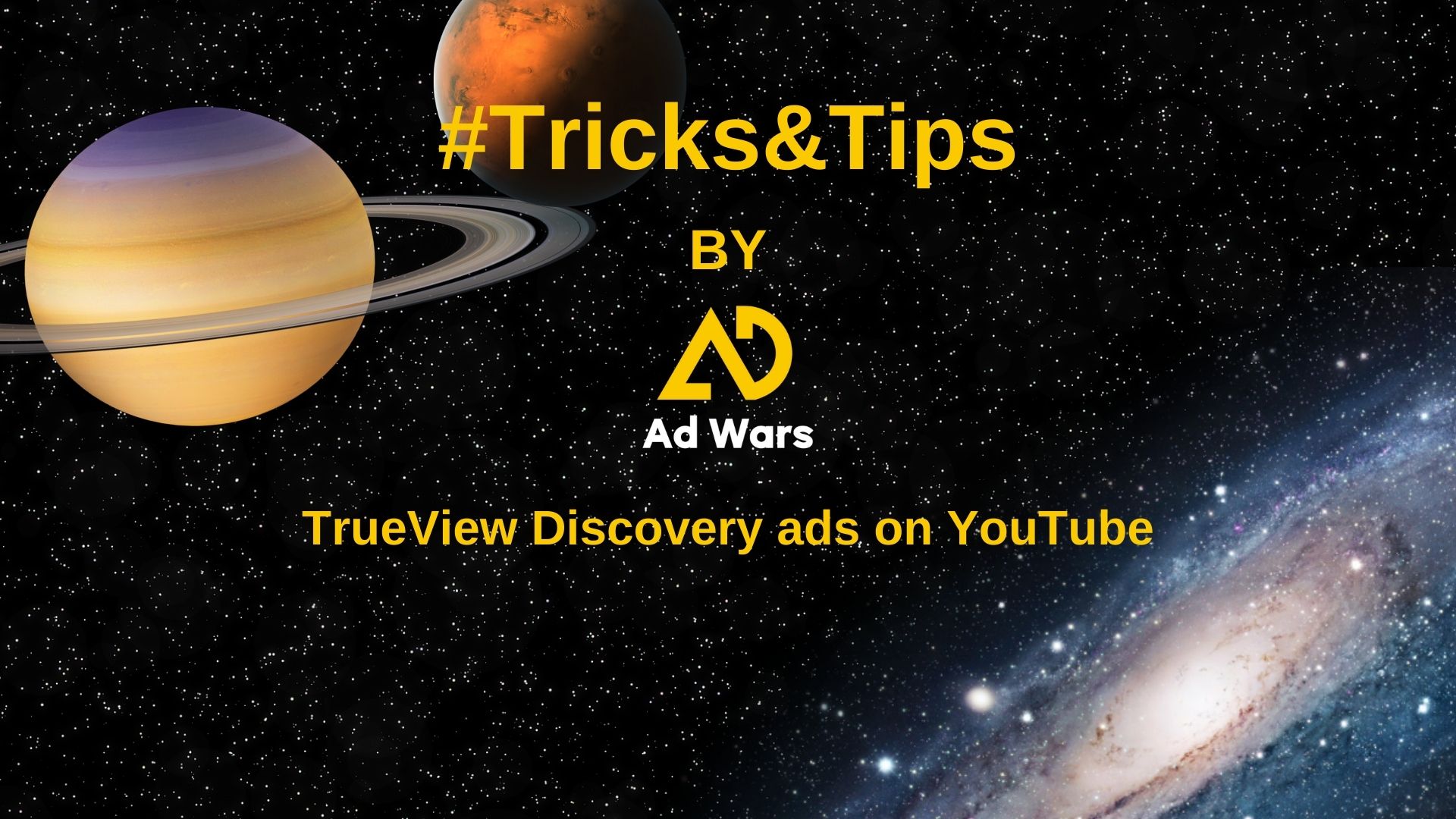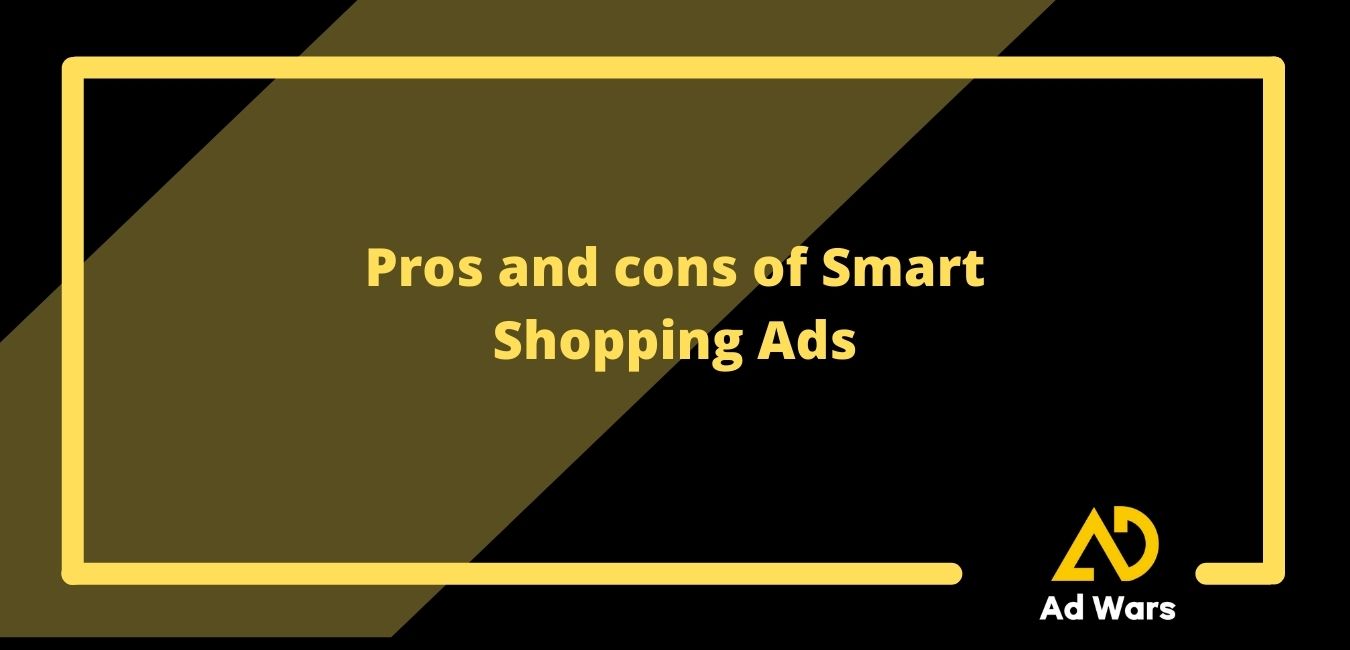TrueView Discovery ads on YouTube
14 October 2021
TrueView Discovery ads are one of the staple ads on YouTube. Very often used by bloggers, vloggers, the music industry and companies that have their own YouTube channel. Right after in-stream Youtube ads, these are the most used video ads. Who and why should have them in their Google Ads campaign? How to target them? I will try to answer these and other questions later in this post.
What are TrueView Discovery ads?
TrueView Discovery ads are movie ads that appear in the YouTube search engine. It is worth noting here that YouTube is the second largest search engine in the world. Additionally, ads appear in tooltips on the video playback pages. On computers, this is most often in the right-hand column, and on mobile phones, under the video. The ad consists of an image and up to three lines of text (title + two descriptions). The biggest disadvantage of this type of advertising is definitely the billing format. Unfortunately, just like in video in-stream ads, we also pay for views here. It’s a pity because Google could easily introduce billing for clicks here. The cost of displaying, however, is not high and in the Google Ads accounts, I keep it is an average of 3 cents. After clicking on the ad, the user is transferred to the video or channel viewing the page on YouTube.

Who are TrueView Discovery ads for?
This ad format is most often used by the music industry (new music videos), vloggers, bloggers and companies that develop their YouTube channels. TrueView Discovery ads are used to promote longer videos that are not suitable for in-stream ads.
These ads are definitely less intrusive and less annoying to users than In-stream ads. They don’t interrupt the videos they are watching, and the user has to click on the thumbnail to see the advertised video.
I also use these ads very often at a time when a given channel has a problem standing out in YouTube’s organic results. After using Discovery ads for a while, I have noticed an increase in searches for my videos in organic search results among my customers. I will not say that it has a 100% impact, but if we increase the viewership of advertisements and the advertised channel collects new followers, the videos on the channel appear more often in the search results each month.
The targeting capabilities of TrueView Discovery
The targeting capabilities of TrueView Discovery are exactly the same as for any other YouTube ad. We can choose demographic targeting, i.e. age, gender and household income. Interest, topic (video topics), remarketing, locations, languages, devices, keywords, and placements (specific videos or channels) targeting.

From my experience, I can recommend placement targeting possibly limited demographic targeting. In such targeting, we can choose what films our advertisement will show or on which channels. We need to spend some time finding channels related to our industry, or the industry whose users will need our products/services. However, it is worth doing, because thanks to this our ads will reach the users we care about. If we do not want to do this, or there are a lot of such channels, you can try to target specific topics. However, it will be much more targeting.
The second option that I test frequently is keyword targeting. Here, keyword targeting is understood differently from in-stream advertising. When choosing keyword targeting in Discovery, we target the keywords that the user enters in the YouTube search engine and, additionally, videos that have these words in the description or title.
If we are talking about keywords, TrueView Discovery ads can also be targeted at non-standard audience groups, which I wrote about in this post: Targeting display ads at people who search for specific search terms. This is a very interesting targeting option that is definitely worth testing.
Why is this particular format worth choosing?
In fact, if we only have longer videos on our YouTube channel, we have no choice. Such films will not be displayed in the in-stream format without processing and shortening, because they will not fulfil their task there. The second very important factor, in my opinion, that my clients pay attention to is the non-intrusive ad format. There are users who attach great importance to this.
What should a TrueView Discovery ad look like?
There are no major requirements here when it comes to the movie itself. This format usually uses regular videos that are published on a given channel without any corrections or changes. In this case, we should definitely put more effort into targeting. The advertisement itself is an image (usually a frame from the movie), the text of the headline (max 25 characters) and description (max 35 characters), which is not shown when the advertisement is displayed in the proposed films. Remember that to create a TrueView Discovery ad, the video we use must be added to YouTube.
How to use TrueView Discovery ads on YouTube?
It is best to show the use of advertisements on examples, so below are two cases from my backyard.
Travel vloggers
One of the standard cases for the Discovery campaign on YouTube. A long-disused channel revived by travel bloggers. Lots of thematic films about different regions and places in the world. In order to increase viewership and recognition, and at the same time not to be intrusive (which was very important to my clients), we decided to focus on Discovery ads. An additional problem here was the fact that the videos were poorly displayed in the YouTube search engine without ads. Each video was targeted at 3 different audiences. The first targeting was very general and aimed at reaching as many viewers as possible. Targeting topics related to travel to different regions of the world. The second targeting option used was keyword targeting. These were keywords related to the movie, region and topic it touched upon. The third targeting is placements. We wanted the ads to appear alongside videos from popular travel channels. Thanks to these three options, it was possible to reach both people generally interested in travelling and those interested only in a specific topic, which translated into an increase in the number of channel followers and a definitely growing number of views.
Music producer
An example of a music producer with whom I work periodically. When a new video comes out and needs to be shown to a wider audience, we operate on two levels. A short material suitable for an In-stream advertisement as information about a new clip is always prepared for the clip. The second page is an advertisement for TrueView Discovery targeted at interests (a specific music genre), keywords related to the artists appearing in the clip (frequent cooperation with famous musicians) and the channels/clips of musicians with whom a given producer cooperates.
Summary
If you are a blogger, musician, music producer or simply the videos on your channel are long and not suitable for In-stream advertising, then you can do nothing else than launch the Discovery campaign on your Google Ads account. For this campaign, focus on targeting. The narrower and better-selected target group for a given film, the better. Remember, we’re paying for impressions here, so a high CTR is absolutely welcome. Competition on YouTube is increasing and in my opinion, people who run channels will face a greater and greater challenge (they are already), so this form of advertising will be irreplaceable in many cases. All this so that our channel does not get lost in the maze of videos that are uploaded on YouTube every day. The sooner you do it, the better because competition is still relatively low.
If you need help with advertising on YouTube, please contact me via the contact form below.





No comments